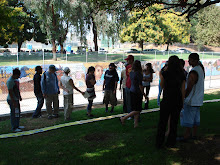What famous Russian Tsar placed a tax of 100 rubbles on men who refused to shave their beards?
 Answer: Peter the Great,
Answer: Peter the Great, who lived from 1682 to 1725.
Peter wanted to modernize his citizens, so he instituted many reforms designed to "Europeanize" them. Here is an excerpt from Jean
Rousset de Missy's book, Life of Peter the Great, written about 1730.
The tsar labored at the reform of fashions, or, more properly speaking, of dress. Until that time the Russians had always worn long beards, which they cherished and preserved with much care, allowing them to hang down on their bosoms, without even cutting the moustache. With these long beards they wore the hair very short, except the ecclesiastics, who, to distinguish themselves, wore it very long. The tsar, in order to reform that custom, ordered that gentlemen, merchants, and other subjects, except priests and peasants, should each pay a tax of one hundred rubles a year if they wished to keep their beards; the commoners had to pay one kopek each. Officials were stationed at the gates of the towns to collect that tax, which the Russians regarded as an enormous sin on the part of the tsar and as a thing which tended to the abolition of their religion.
These insinuations, which came from the priests, occasioned the publication of many pamphlets in Moscow, where for that reason alone the tsar was regarded as a tyrant and a pagan; and there were many old Russians who, after having their beards shaved off, saved them preciously, in order to have them placed in their coffins, fearing that they would not be allowed to enter heaven without their beards. As for the young men, they followed the new custom with the more readiness as it made them appear more agreeable to the fair sex.
From the reform in beards we may pass to that of clothes. Their garments, like those of the Orientals, were very long, reaching to the heel. The tsar issued an ordinance abolishing that costume, commanding all the boyars [i.e., the nobles] and all those who had positions at court to dress after the French fashion, and likewise to adorn their clothes with gold or silver according to their means. As for the rest of the people, the following method was employed. A suit of clothes cut according to the new fashion was hung at the gate of the city, with a decree enjoining upon all except peasants to have their clothes made on this model, upon penalty of being forced to kneel and have all that part of their garments which fell below the knee cut off, or pay two grives every time they entered the town with clothes in the old style. Since the guards at the gates executed their duty in curtailing the garments in a sportive spirit, the people were amused and readily abandoned their old dress, especially in Moscow and its environs, and in the towns which the tsar often visited.
The dress of the women was changed, too. English hairdressing was substituted for the caps and bonnets hitherto worn; bodices, stays, and skirts, for the former undergarments. . . The same ordinance also provided that in the future women, as well as men, should be invited to entertainments, such as weddings, banquets, and the like, where both sexes should mingle in the same hall, as in Holland and England. It was likewise added that these entertainments should conclude with concerts and dances, but that only those should be admitted who were dressed in English costumes. His Majesty set the example in all these changes. . .
Source:
http://www.fordham.edu/halsall/mod/petergreat.htmlImage:
http://library.osu.edu/sites/exhibits/petheo/peterthegreat.htmAll for now and Happy Historybusting
 Adak National Forest, a.k.a. The Christmas Tree Forest.
Adak National Forest, a.k.a. The Christmas Tree Forest. 











